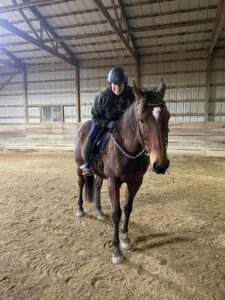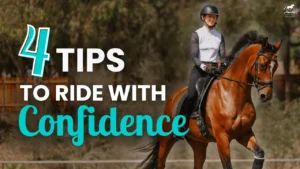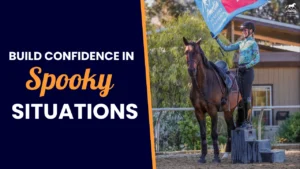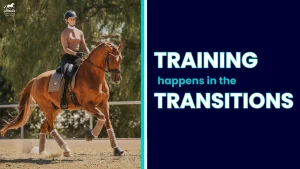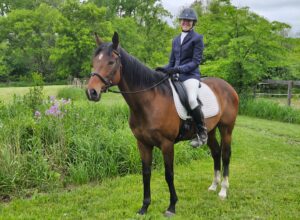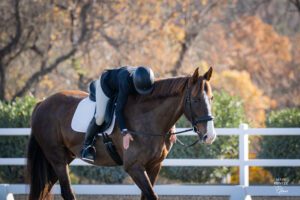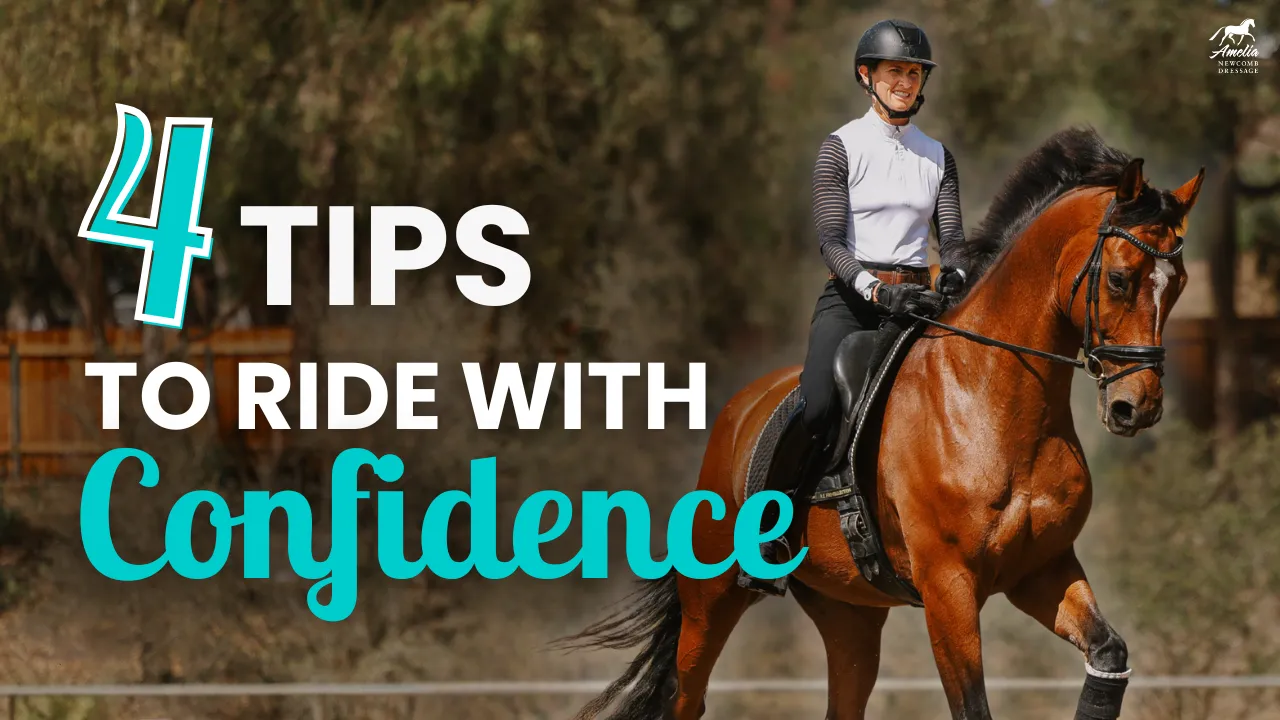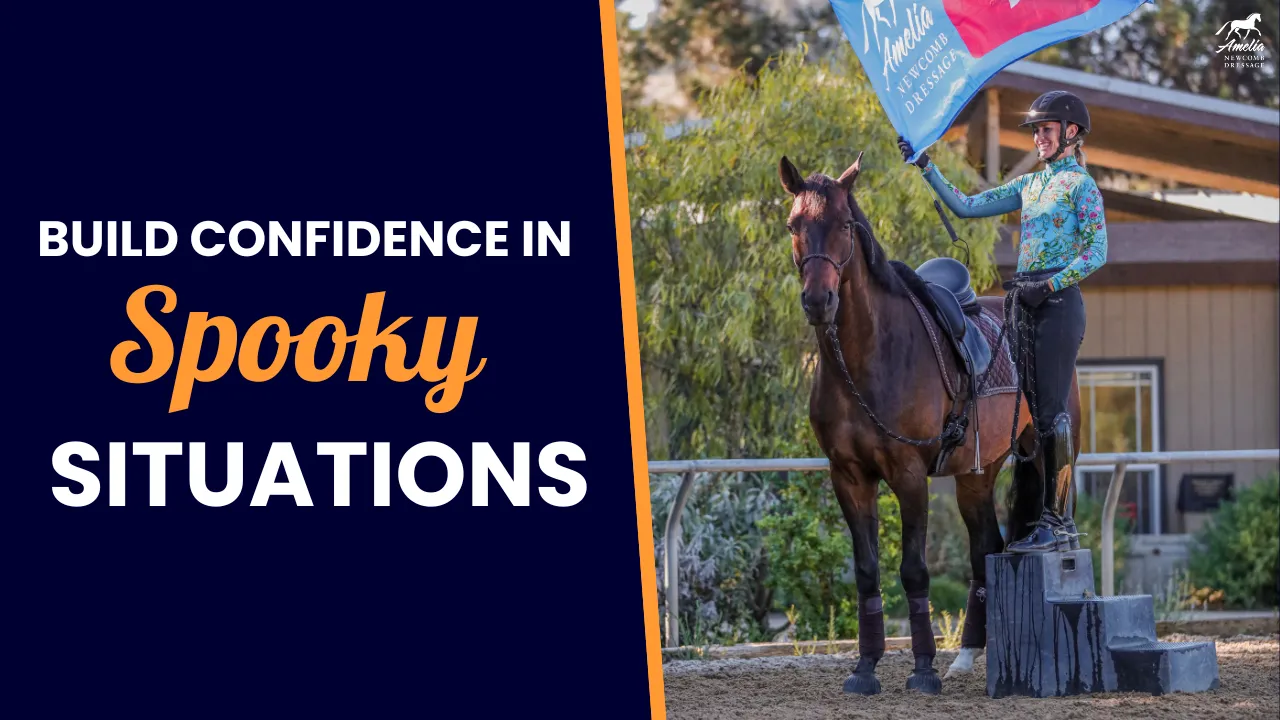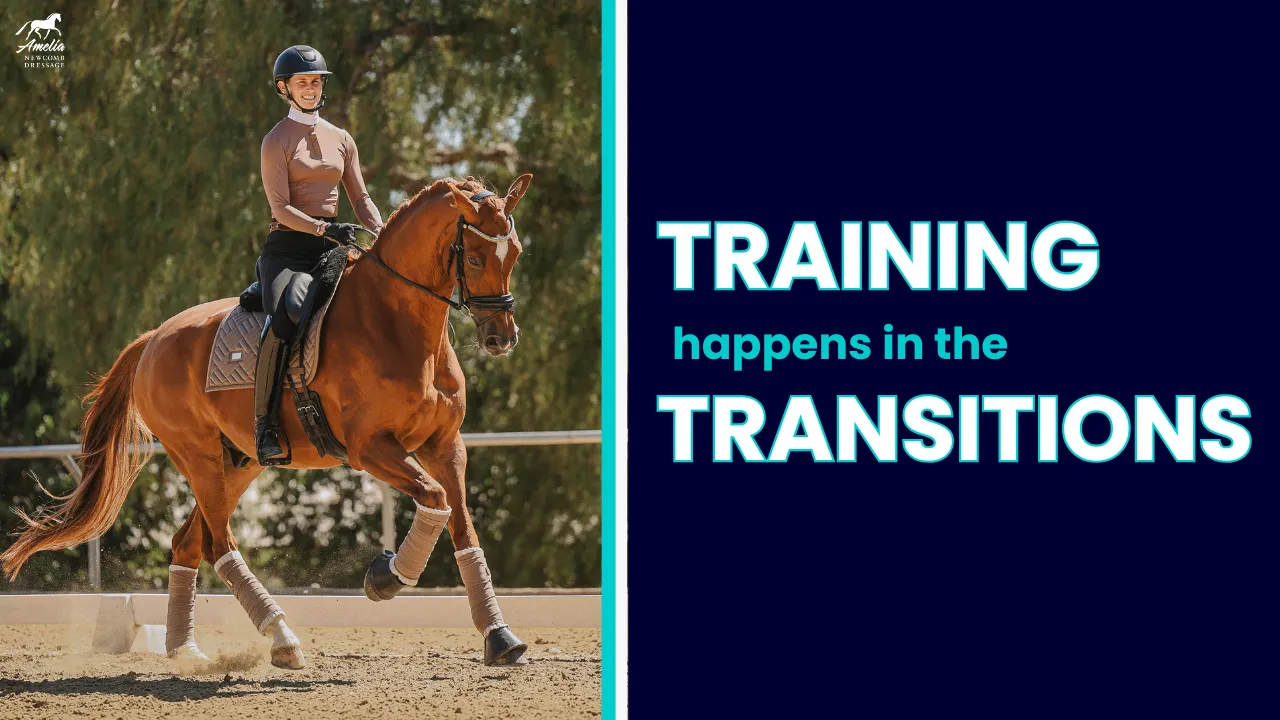We’ve all heard the phrase, “you’ve got to walk before you can run”. Well when it comes to canter lead changes, you’ve got to walk before you can FLY! Before we can learn flying changes, we must learn simple changes! The simple change involves cantering, then bringing your horse back to a few steps of collected walk, and then cantering again on the opposite lead.
This week’s video is going to teach you how to do that step by step. This movement starts to show up at second level and is the foundation for learning flying changes so let’s get started.
Firstly, get your horse moving on a circle to begin your walk-canter-walk transitions, and set your legs up in the position to ask for canter, with your inside leg on the girth and your outside leg behind it.
When you are ready, give the aid for the canter by pushing them off your inside leg, then half halting and asking with the legs for canter.
What we really want and need to see from the transition are the following.
1. There are no trot steps
2. The first canter stride is active
3. The horse stays round and connected
Canter to walk is one of the hardest transitions and requires a lot of collection. If you’re finding this difficult, make a 10m circle in the canter to really get your horse collected and then use your seat to let the horse drop into the walk.
The best way to introduce the simple change is with the figure eight pattern. Canter a circle, do a few walk steps across the center line and then pick up your new canter on the other lead and make the second circle of the eight.
When you land in the walk, leg yield off the inside leg so the inside hind steps into the outside rein to prepare for the canter.
Start practicing the transition on a three loop serpentine as the second level test will ask you to execute the movement in this pattern.
The “simple” change is something of a misnomer as the movement takes a lot of riding and work to keep your horse active both in the walk and canter.
Watch the video where I go into MUCH more detail about it and let me know in the comments if you find it helpful!
Thanks for watching and happy riding!
